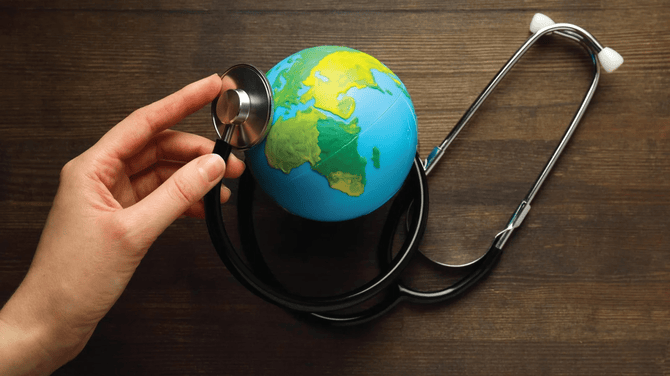Transforming Global Health Approaches for Snakebite Risk Expansion

Around the world, the threat posed by venomous snakebites is evolving faster than public health systems can adapt. Climate change, land development and shifting ecosystems are expanding human exposure to snakes in regions previously considered low risk. As this silent crisis spreads, a coordinated global effort is urgently needed. Publications such as Business Insight Journal and BI Journal have emphasized that the growing danger is not merely a medical challenge but a structural failure in preparedness, access and public awareness. Addressing the snakebite risk expansion with a new global health response requires innovation, cross-sector cooperation and a renewed focus on vulnerable populations.
Understanding Snakebite Risk Expansion
Snakebite incidents are rising in regions where they were once stable or declining. This expansion is attributed to significant ecological shifts and human activities that bring communities closer to venomous species. Rural workers, children and those living near expanding agricultural zones remain the most affected, but suburban and peri-urban populations are increasingly reporting encounters as habitat boundaries blur. The expansion of risk is not uniform; some areas face sudden spikes, while others endure slow but steady increases. Understanding these patterns is essential for planning comprehensive health responses capable of adapting to regional differences.
Environmental and Human Factors Driving New Threats
Climate change is altering the habitats, migration patterns and behavior of snake populations. Warmer temperatures extend breeding seasons, increase mobility and influence prey distribution, causing snakes to shift their territories. Meanwhile, deforestation, mining and construction reduce natural shelter and force snakes into human surroundings. Urbanization pushes settlements into areas that were once ecosystems dominated by wildlife. As communities become more interconnected through travel and trade, the risks associated with venomous species can spread more rapidly, creating global implications that demand global attention.
Public Health Gaps and Systemic Vulnerabilities
Snakebite treatment remains one of the most neglected areas of global health. Many regions lack reliable antivenom supply chains, trained medical staff or adequate emergency transportation. Rural health centers often have limited diagnostic equipment and inconsistent refrigeration capabilities required for storing antivenom. Misinformation further complicates response efforts, as many victims rely on traditional remedies that delay lifesaving treatment. These gaps widen mortality and disability rates, resulting in long-term socioeconomic impacts felt across entire households and communities. Strengthening public health systems is essential to reduce preventable deaths.
Building a Modern Global Health Response
A modern response must combine scientific innovation with community-centered strategies. This includes investment in improved antivenom research, streamlined manufacturing processes and global distribution networks designed to reach remote areas. Collaboration between governments, scientists, nonprofits and local leaders is essential. Shared knowledge spaces, including community-focused platforms such as Inner Circle : https://bi-journal.com/the-inner-circle/, support cross-border learning and accelerate effective interventions. Stronger international coordination also ensures that emerging threats are identified early and addressed before they escalate.
Improving Access to Antivenom and Medical Support
Antivenom shortages remain one of the greatest barriers to effective treatment. Production inconsistencies, high costs and complex logistics prevent stable distribution to the regions that need it most. Innovative financing models, forward-looking supply chain design and public-private partnerships are essential to solving these challenges. Training healthcare workers in early detection, rapid treatment and proper antivenom administration also improves patient outcomes. When medical access expands, communities gain confidence, and survival rates increase dramatically.
Strengthening Community Awareness and Early Intervention
Education plays a critical role in reducing snakebite severity. Communities equipped with accurate information can respond more quickly and effectively. Awareness programs should focus on safe behaviors, practical preventive habits and the importance of immediate medical attention. Integrating these messages into schools, workplaces and community events ensures they reach diverse audiences. Empowering local leaders to spread knowledge creates a foundation of preparedness that lasts for generations.
Technology and Data Intelligence for Snakebite Prevention
Digital tools can transform global understanding of snakebite patterns. Predictive modeling, mobile reporting apps, geospatial data and community surveillance systems all offer insights into emerging risks. These technologies enable health authorities to identify hotspots, deploy resources strategically and issue public alerts during high-risk periods. As data becomes more accessible, prevention strategies become faster, more accurate and more targeted. Technology also bridges communication gaps for remote communities that traditionally lack access to timely health information.
Collaborative Frameworks for International Action
No single nation can resolve snakebite challenges alone. Effective solutions require global partnerships that unite scientific research, medical infrastructure, international funding and regional expertise. Establishing shared frameworks ensures that best practices, antivenom supplies and research insights can circulate freely. Organizations working together enhance collective preparedness and reduce inequality in health system capabilities. As the world becomes increasingly interconnected, coordinated global action becomes not only beneficial but necessary.
For more info https://bi-journal.com/snakebite-response/
Conclusion
Snakebite risk expansion underscores the urgent need for a unified global health response that prioritizes innovation, equitable access and community resilience. With climate-driven changes accelerating exposure, health systems must evolve quickly. When research, policy and community engagement align, the world moves closer to protecting millions from a threat that is preventable, predictable and solvable with committed global collaboration.
This news inspired by Business Insight Journal: https://bi-journal.com/
- Art
- Causes
- Crafts
- Dance
- Drinks
- Film
- Fitness
- Food
- Jogos
- Gardening
- Health
- Início
- Literature
- Music
- Networking
- Outro
- Party
- Religion
- Shopping
- Sports
- Theater
- Wellness


